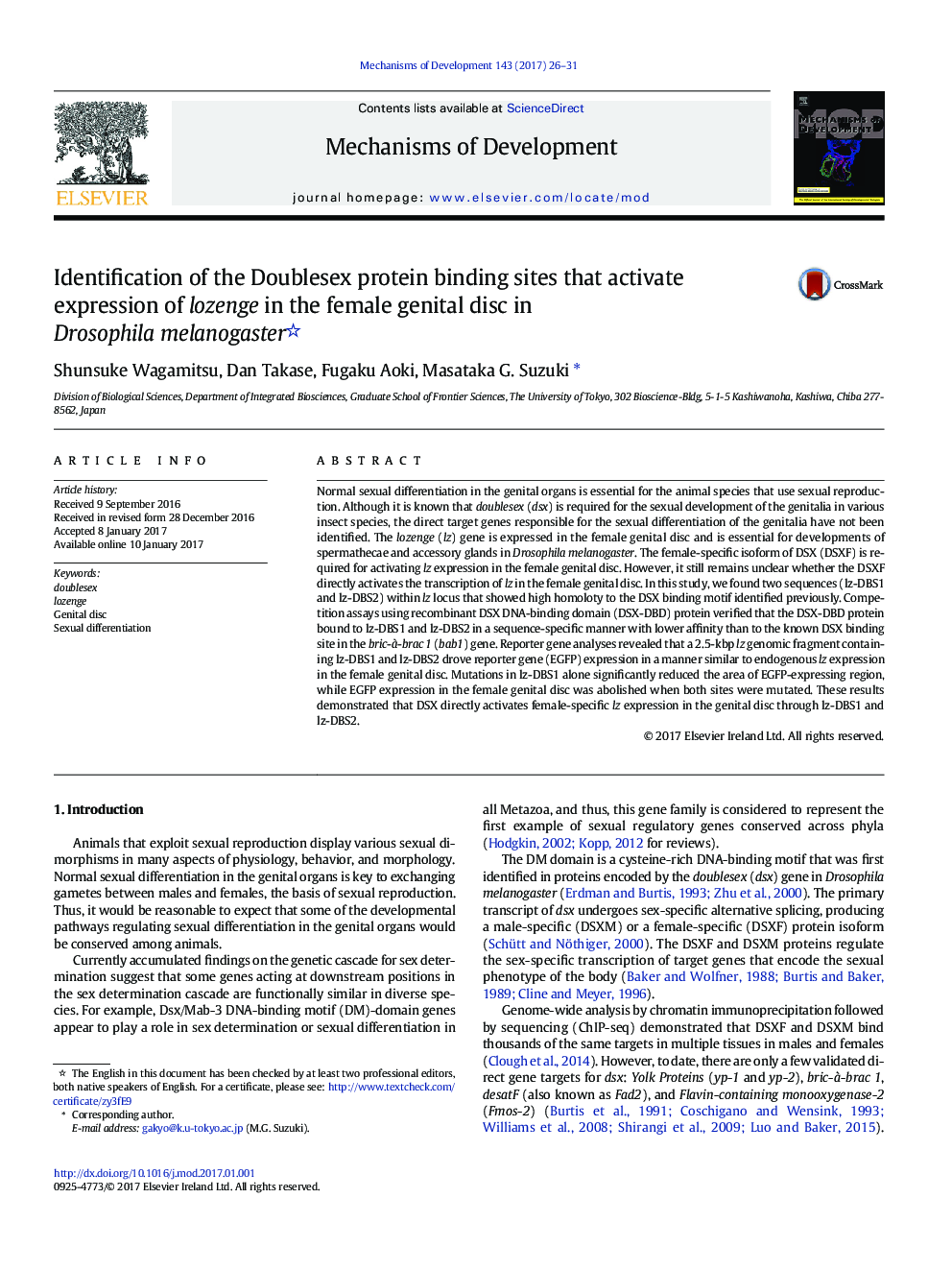| Article ID | Journal | Published Year | Pages | File Type |
|---|---|---|---|---|
| 5533812 | Mechanisms of Development | 2017 | 6 Pages |
â¢Two putative DSX binding sites (lz-DBS1 and the lz-DBS2) was found in the third intron of the lozenge (lz) gene.â¢DSX protein bound to the lz-DBS1 and the lz-DBS2 in a sequence-specific manner.â¢A 2.5-kb genomic fragment including the lz-DBS1 and the lz-DBS2 was sufficient for lz expression in the female genital disc.â¢lz expression in the female genital disc was activated through the lz-DBS1 and the lz-DBS2.
Normal sexual differentiation in the genital organs is essential for the animal species that use sexual reproduction. Although it is known that doublesex (dsx) is required for the sexual development of the genitalia in various insect species, the direct target genes responsible for the sexual differentiation of the genitalia have not been identified. The lozenge (lz) gene is expressed in the female genital disc and is essential for developments of spermathecae and accessory glands in Drosophila melanogaster. The female-specific isoform of DSX (DSXF) is required for activating lz expression in the female genital disc. However, it still remains unclear whether the DSXF directly activates the transcription of lz in the female genital disc. In this study, we found two sequences (lz-DBS1 and lz-DBS2) within lz locus that showed high homoloty to the DSX binding motif identified previously. Competition assays using recombinant DSX DNA-binding domain (DSX-DBD) protein verified that the DSX-DBD protein bound to lz-DBS1 and lz-DBS2 in a sequence-specific manner with lower affinity than to the known DSX binding site in the bric-Ã -brac 1 (bab1) gene. Reporter gene analyses revealed that a 2.5-kbp lz genomic fragment containing lz-DBS1 and lz-DBS2 drove reporter gene (EGFP) expression in a manner similar to endogenous lz expression in the female genital disc. Mutations in lz-DBS1 alone significantly reduced the area of EGFP-expressing region, while EGFP expression in the female genital disc was abolished when both sites were mutated. These results demonstrated that DSX directly activates female-specific lz expression in the genital disc through lz-DBS1 and lz-DBS2.
